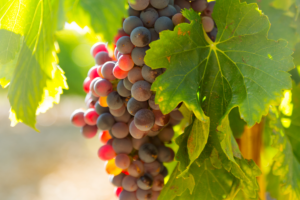Saeta Efficacy in Strawberries
Date: March, 2020 Goal: Demonstrate the effect of...
Read More »

SAETA is a unique, highly concentrated nutritional complex formulation containing Phosphorous (as phosphite ion) and Calcium that move systemically through the vascular system.
SAETA is water-soluble fertilizer containing high assay of readily available Phosphorous and Calcium to supplement plant nutrient needs and to improve root mass production.
SAETA has been formulated in a wettable powder form. SAETA provides a phytototonic affect on treated plants due the phosphorous in form of phosphite ion.
SAETA can be used on soils and/or as a foliar spray, and will provide longer residual effect than similar soluble compounds. SAETA promotes plant vigor and improves yields.
Uses
A broad variety of crops including Wheat, Alfalfa, Pastures, Field Corn, Sweet Corn, Soybeans, Beans, Peas, Sorghum, Oat, Sugar Cane, Vegetable Root Bulb or Tuber Crops (Potatoes, Onions, etc.) Tomatoes, Peppers, Leafy Vegetables (Lettuce, Spinach, Cauliflower, Broccoli, etc), Cucurbits (Melons, Watermelon, Squash, Zucchini, etc.), Table Grapes and Wine Grapes, Strawberries, Blueberries, Blackberries, Raspberries, Cranberries, Kiwi, Pome Fruits (Apples, Pears, etc.), Stone Fruits (Plums, Nectarines, etc.) Citrus, Avocadoes, Rice, Asparagus, Okra, Nut Crops (Peanuts, Almonds, Walnuts, etc), Olives, Ornamentals, Landscape.
Use Rate
1-2lbs/ac
SAETA is a product with double action: it fertilizes (providing the plants with essential components such as Phosphorus and Calcium) and has fungistatic properties, since it stimulates the natural defense mechanisms of plants against the attack of Oomycete fungi such as Phythophthora spp., Pythium spp., etc.


| Crop | Dose | Time of Application |
|---|---|---|
| Tomatoes, Peppers, Chili, Lettuce, Spinach, and other leafy vegetables. Broccoli, Cauliflower, and other brassica varieties, Soybeans, Beans, and Peas. Potatoes, Onions, and other root. Bulb, or tuber crops, bedding plants, annual, Palms, Turf, ornamentals, landscapes, Almonds, Walnuts, and other nut crops. Plums, Nectarines, and other stone fruits. Apple, Pears, and other pome fruits. Citrus, Avocados, Kiwi, strawberry, Raspberries, and Blueberries | 0.5-2 lbs/ac | Two consecutive applications are recommended. Apply with a water volume that allows maximum application coverage. The use of an adjuvant that enhances application coverage is recommended. Do not apply at severity levels exceeding 10% of the disease, or alternatively, dose in mixture with a systemic fungicide. |
| Pineapples | 0.5-2 lbs/ac | Apply at a rate - kg/month/Ha. Applications should be repeated on a monthly basis during the growing phase. Minimal recommended program is 3 applications, as follows: 1) 2KG at Post Forcing. 2) 3KG 30 days after1st application. 3) 3 KG 39 days after 2nd application. |
| Banana and Plantains | 0.5-2 lbs/ac | For new plantings, start applications at the formation of the 2nd-3rd leaf, and repeat applications every 7 to 14 days. For established plants, apply once per month via drench. |
_____________________
Pineapples
_____________________
Banana and Plantains
0.5-2 lbs/ac
_____________________
0.5-2 lbs/ac
_____________________
0.5-2 lbs/ac
Apply dose or 0.5 to 2 pounds
per acre (+/- 0.5 to 2.5 liters
hec/acre) per application. Apply the first application after transplanting, thinning or at second true leaf stage. Apply subsequent applications at ten to fourteen day intervals or as needed to supplement nutritional requirements.
_____________________
Apply at a rate – kg/month/Ha. Applications should be repeated on a monthly basis
during the growing phase. Minimal recommended program is 3 applications, as follows:
_____________________
For new plantings, start applications at the formation of the 2nd-3rd leaf, and repeat applications every 7 to 14 days. For established plants, apply once per month via drench.

Date: September, 2015 Goal: Determine the effectiveness of Magnet B

Date: March, 2020 Goal: Demonstrate the effect of Saeta in
WE WANT TO HEAR FROM YOU
WE’VE BUILT OUR BUSINESS ON HARD WORK AND TRUST, BY LISTENING TO FARMERS FOR MORE THAN 20 YEARS.